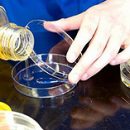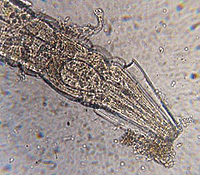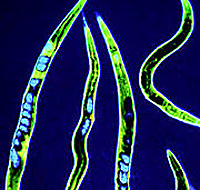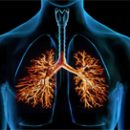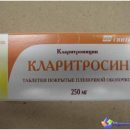What is ascaridosis? What are the manifestations of Askaridoza? How to diagnose ascarideosis? How treatment Askaridoz? Answers to these questions you will find in the article.
Content
What is ascaridosis
Ascaridosis - Glice Invasia, flowing at an early stage with lung damage
(usually flowing asymptomatic), allergic reactions, in later stages - violations of the gastrointestinal activities
tract with possible hard complications.
Main pathogen - Round worm (nematode) Ascaris Lumbricoides. Similar
lesions are capable of calling other nematodes observed
Human is rare.
Ascaridosis is widely distributed in countries with moderate and warm
climate, it is rarely recorded in the polar and indoor regions and
Desert zones. The average incidence of the earth's population reaches 1
billion cases per year. The mechanism of infection - fecal-oral (that is
through dirty hands, unwashed fruits, vegetables). Source of infection - soil,
Vegetables, berries, fruits infected with Helminti Eggs.
What are the manifestations of Askaridoza
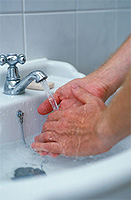
After swallowing by a man of mature eggs Askarid in the upper divine department of them
The larvae go, penetrate the intestinal wall in the blood flow of the portal vein and are entered
Through the liver and upper hollow vein in the right heart. By light artery
The larvae fall into the lungs and through the walls of the light capillaries migrate to Alveola.
From the respiratory tract, migrate to the oral cavity (more often at night) and, mixing
with saliva, swallow. The larva, who again fell into the intestines, after 2.5 - 3 months matures in an adult. The clinical picture of ascarideosis is due to allergyization
The body to the productivity of the parasite and mechanical blockage of amazing organs.
The intestinal stage of ascarideosis can occur hidden, due to a minor number
parasitizing individuals. The formation of a significant population of Askarid (more
50 individuals) causes the emergence of such signs as an increase in body temperature; in adults - loss of appetite, dizziness, nausea, sensation of gravity in the pancreas
areas; In children - saliva, crossed by teeth at night, pain and bloody
belly, depressed condition, headaches.
«Light» (Migration) Stage has the following features: temperature rise
body, cough with wet, detection of eosinophils in sputum, infiltrates in
Light, eosinophilia (high content of blood eosinophils).
How to diagnose ascarideosis
- Detection of eggs Askarid in feces
- Easy stage of Askaridoz: Hyperoeosinophilia and sputum microscopy (reveal ascaride larvae)
- Serological Methods (Preventation Reactions, Riga, RSK).
How treatment Askaridoz
Preparations of choice in the treatment of ascarideosis:
- Pyrantel is 10 mg / kg (up to 1 g) inside once, the reception is repeated after 2
weeks. Contraindicated in pregnancy
- Furnished member 100 mg 2 times a day for 3 days. After 6 months they are repeated
a course of treatment. Contraindicated in pregnancy
In suspected intestinal obstruction and raging moves, the introduction is shown
Through the naso-gastric probe of a 5% solution of Piperazine Adipata at a dose of 150 mg / kg, then
65 mg / kg every 12 hours 6 times.
In contraindications to the above preparations - hydrocerapy (introduction
oxygen through the intestine probe).
The effectiveness of treatment is determined by three-time (every 2 weeks) research
Fekali.
What are the complications of Askaridoza
- Intestinal obstruction
- Asphyxia (choking) as a result of the migration of Askarid in the nasopharynk and respiratory
Path - Obstructive jaundice
- Acute pancreatitis


